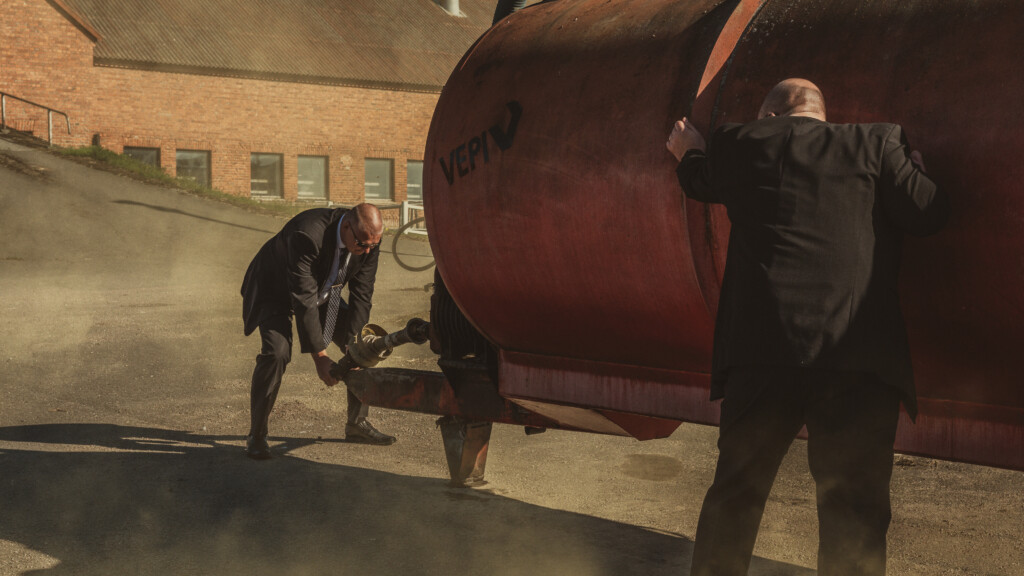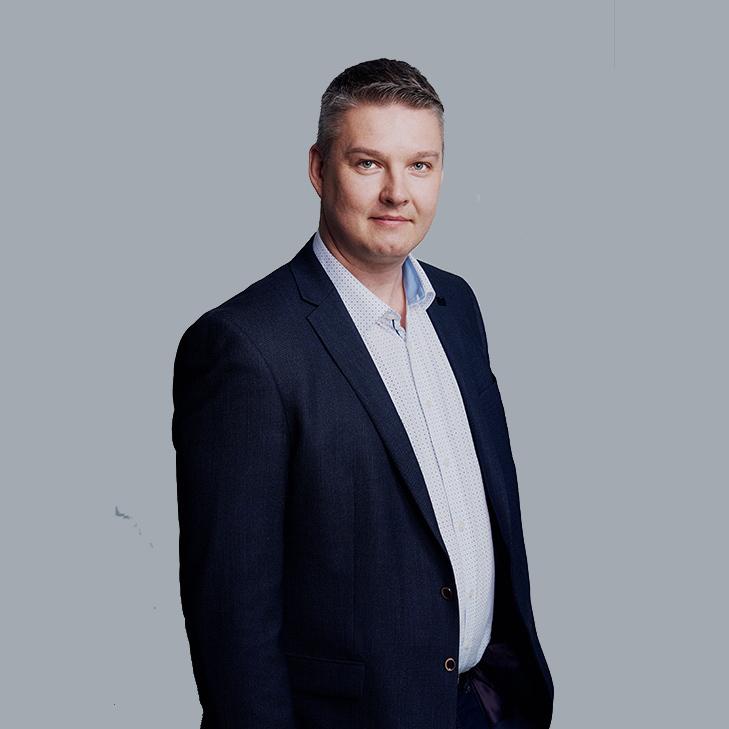Uutiset
More Efficient and Effective Project Management: Succeed with This Checklist

Project management is something we at Semat can be very proud of in terms of our skills and experience. Our clients’ projects can be very extensive, both in scope, budget, and complexity. We have some of the most skilled project managers and leaders in Finland on our payroll, with solid experience in successfully managing projects.
Project management consists of several phases, such as planning, implementation, and monitoring. Each phase has its own tasks and objectives related to the overall project, and their effective management is crucial for the success of the project. First, let’s get to know the expert in this article and then dive into the six-point checklist to ensure projects are successfully completed!
Senior Project Manager Ville Mustanoja: I’ve Always Said Yes to New Opportunities
For this article, we interviewed Ville Mustanoja, our Senior Project Manager. Ville has worked at Semat for six years on the same client assignment. During these six years, he has managed to complete over fifty delivery projects for factory automation systems. At the time of the interview, Ville was simultaneously managing ten different projects.
Before diving into the deep end of project management, let’s find out what kind of a journey Ville has taken to his current position.
“Before joining Semat, I worked for about 12 years in a Chinese-owned company that manufactured liquid packaging machines. I had a lot of dealings with Asians, which has naturally continued in my current assignment. I have travelled to China, Singapore, Malaysia and Taiwan several times.
I started as a service engineer, moving on to commissioning, and from there to managing deliveries and project business. I progressed all the way to the position of COO and Techical Director.
My educational background is originally as a plant installer in the paper industry. I continued my studies in mechanical and production engineering, and now, as an adult, I also completed a master’s degree.
In my production economics studies, there were some project management courses, but my solid project management skills have definitely been gained through practical experience. I have always said yes when offered a new job opportunity or area of responsibility,” Ville says.
Check out These Points and Succeed in Project Management
CHECKPOINT 1 – Clear objectives
Every project must be clearly defined, and its objectives must be understandable to all parties involved. The objectives should follow the SMART principle (in English, goals should be specific, measurable, achievable, relevant and time-bound).
“It is important for the project manager to be involved in discussions already at the stage when sales are nearing completion. It is absolutely essential for the project manager to participate in setting and planning the objectives”, Ville notes.
Ville starts the projects by inviting all stakeholders and project participants to a kick-off meeting.
Before that, Ville thinks about independent milestones or checkpoints along the project’s journey and marks them in his calendar. With the help of checkpoints, Ville visualizes what needs to be ready at each stage, and larger goals are easier to break down into smaller, manageable parts and phases. In addition to defining objectives, it is equally important for project management in the early stages to identify potential risk factors. More on this in point 4.
CHECKPOINT 2 – Project plan
“At the very beginning of the project, a good handshake and baton pass with sales is necessary. I continue from where they left off by creating a practical plan for the project”, Ville says.
Project management is greatly aided by a detailed plan that includes the project’s schedule, resources, and budget. A well-made project plan helps keep the project within its framework and ensures it progresses as planned towards the finish line.
In Ville’s current assignment, the commissioning phase may be planned up to six months in advance. The time required for planning depends greatly on the nature of the project.
CHECKPOINT 3 – Communication
Good communication is a key to successful project management, which is why this checkpoint is the most detailed on our list of six cornerstones of project management!
At the very beginning of the project, it must be ensured that all project participants are up to date with the project’s status, as well as any changes and problems that may (well, quite likely) arise along the way. Effective communication improves understanding and reduces potential ambiguities.
Say things out loud
“The more things are said out loud at the beginning of the project, the better. I believe in transparency, and I prefer to keep people in a loop too much rather than too little. One-on-one chats are not really my cup of the tea: rather I want to share things with all of the key people. Just as I take care of accurate documentation.
This also creates security for myself. Later, there will be no complaints that this or that was not mentioned. All project participants have the right to up-to-date information.”
Ville is in close contact with both the customer and machine tool manufacturers.
To facilitate communication, Ville assigns sub-project managers, i.e. responsible persons, for different areas of the project. In the current assignment, these areas are mechanics, electricity and software. In addition, the projects have a designated installation, commissioning and training managers.
… and on the other hand, make sure that things are documented.
“I prefer email communication to ensure there is a written record. I have learned a certain effective communication style towards clients.
I suggest things in the style of ‘we have thought of doing X this way, does this work for you?’ instead of asking a lot of open-ended questions. I aim for quite precise communication in the Finnish way, so as not to waste time on unnecessary brainstorming sessions that might result in 10 counter-questions,” Ville describes the proven model.
Ville continuously records things in memos on the Teams channel established for the project. Ville has developed his own meeting practice, which he has found effective.
“I hold a project meeting either weekly or every other week. For the meeting, there is always a follow-up list to monitor the project’s progress. Meetings often review the budget, project progress, but also identified risks.”
The meetings are efficient and last about 30–45 minutes.
CHECKPOINT 4 – Resource management
Monitor the project resources, such as employess, equipment, and materials. Make sure resources are available when you need them and optimize their use.
“At the end of each month, I have an intensive phase in my calendar when I do the reporting and review all budgets and project statuses. I want to be constantly aware of where we stand in terms of both people and finances. And of course, always people first,” Ville emphasizes.
Ville continues by reminding that there is no ‘someone’ who could do things. Every task must always have a designated responsible person and preferably also a backup. Ultimately, the project manager is responsible and takes care of the task if necessary.
“You can always call me if there’s an emergency. This is how I always instruct everyone in my projects. On the other hand, when I turn off the computer in the evening, it stays off. However, I am always reachable by phone.”
CHECKPOINT 5 – Risk management
Identify potential risks in the project and develop a plan to manage them. By anticipating and preparing for risks, many problems during the project can be avoided. Risk management runs throughout the entire project. Even at the kick-off, it is necessary to consider whether any danger points are identified and how to prevent them. Each area must also have designated responsible persons: who will take charge if something unfortunate happens? And most importantly: who is financially responsible for what?
Risk management also includes cybersecurity risks and data protection. Sensitive matters must always be handled with absolute confidentiality, and from the very beginning, considering and minimizing data protection risks, who is entitled to what information. A project management professional knows how to create and filter different distribution lists.
“Already at the early stages of the project, it is important to anticipate risks related to people, facilities, machines, or even IT, and to make a plan to prevent them,” Ville points out.
CHECKPOINT 6 – Monitoring, evaluation and feedback
The person responsible for project management should monitor the project’s progress and regularly evaluate its results. If necessary, changes can be made to the plan and resource allocation along the way. People need feedback to stay motivated; both constructive and positive. In Finnish culture, it is often the case that silence is a good sign. When things are going well, no extra feedback is given. We could learn a lot from cultures where positive feedback is given more often than once a year as a mandatory part of a development discussion.
Ville emphasizes that the most important quality of a project manager is getting along well with people: “Getting along with people is critical for project management. It may be even more important than openness. You must be able to talk about everything, including more difficult topics such as money.”
Lessons must always be learned from projects so that possible mistakes are not repeated in the future. The last phase of the project before closing it is lessons learned, where important issues that emerged in the project are highlighted as development points and taken into account in future projects. It is also important to give feedback to the people involved and review the project’s successes and lessons on a personal level..
The Best Thing About Ville’s Work: Freedom and Influencing the End Result
Finally, Ville shares what he enjoys most about his job:
“In project management, I enjoy the most that I have a certain freedom to do things and I can greatly influence the outcome of the project. Namely: the project and the outcome look like the project team. If things are neglected, the result will not be good. If things are done interactively, we may achieve an even better outcome than expected.”
Ville also praises Semat as an employer, stating that it is good to be a project management professional on Semat’s payroll:
“When working at Semat, there is also a certain freedom. It’s a bit like being an entrepreneur. I can warmly recommend Semat to project management specialists who want to work on meaningful and suitably challenging projects, always in line with their own experience and expertise.”
“Micromanagement is not practiced at Semat. The expertise of professionals is respected. When things are done to the best of one’s ability and conscientiously, that is enough. Whenever support and sparring are needed, it is available”, Ville continues.
Well-managed projects can achieve desired goals, save resources, and reduce risks. Project management is not stressful tightrope walking or firefighting when things are well planned, realistic goals are set for the project, responsible persons are designated for different areas, and there is active and open communication in the project. In many environments, project management can also be seen primarily as people management.
If your organization needs a strong project management professional, get in touch! Among Semat’s staff, you will find some of the best project management experts in Finland. Check out our contact info.



